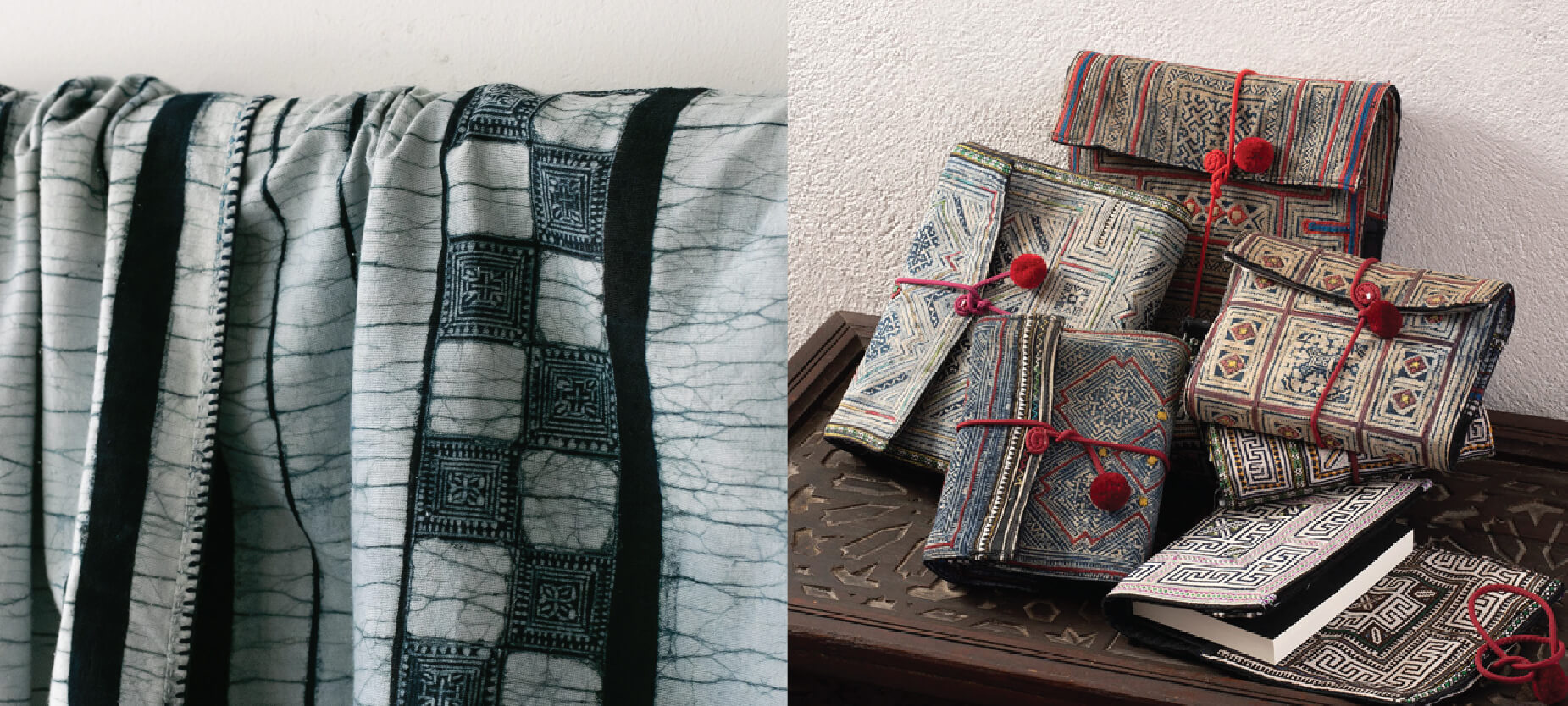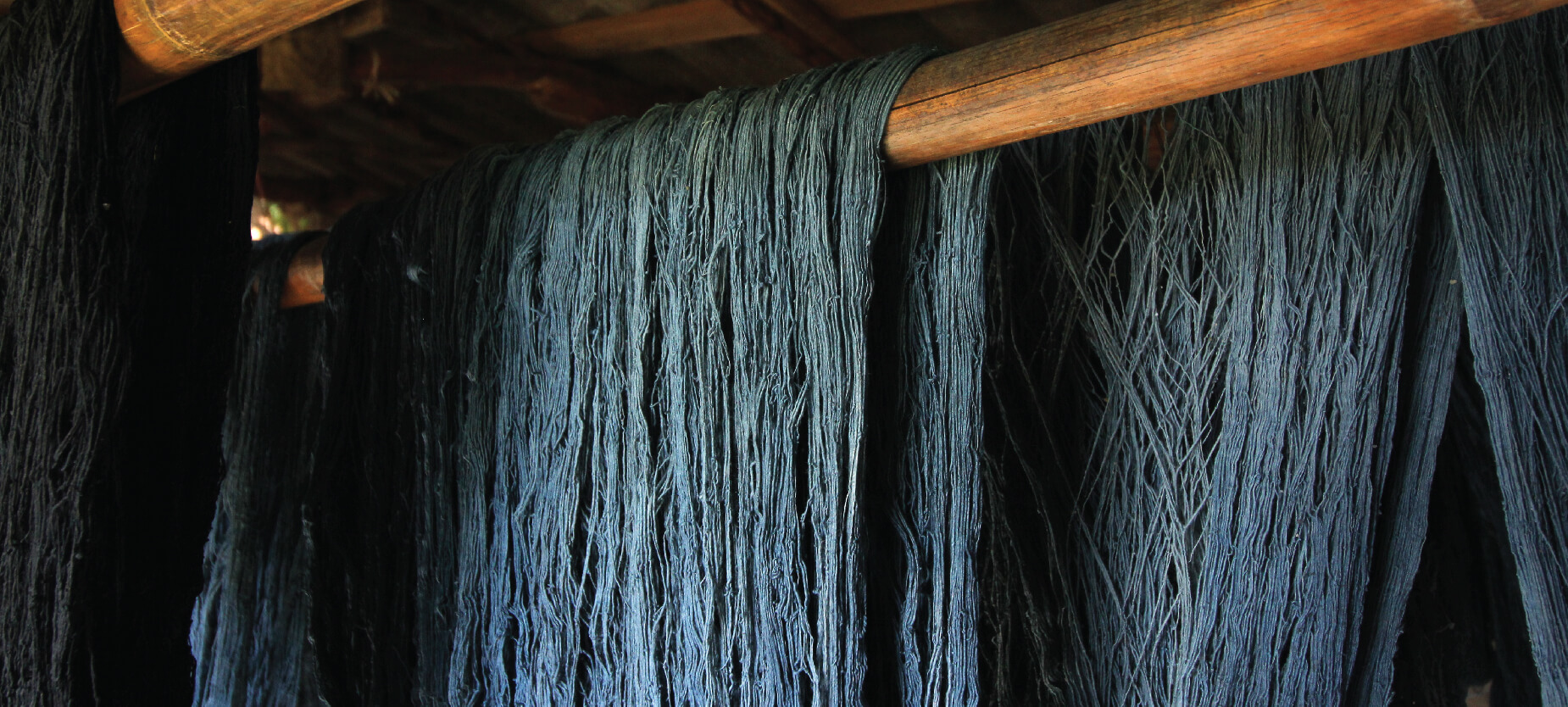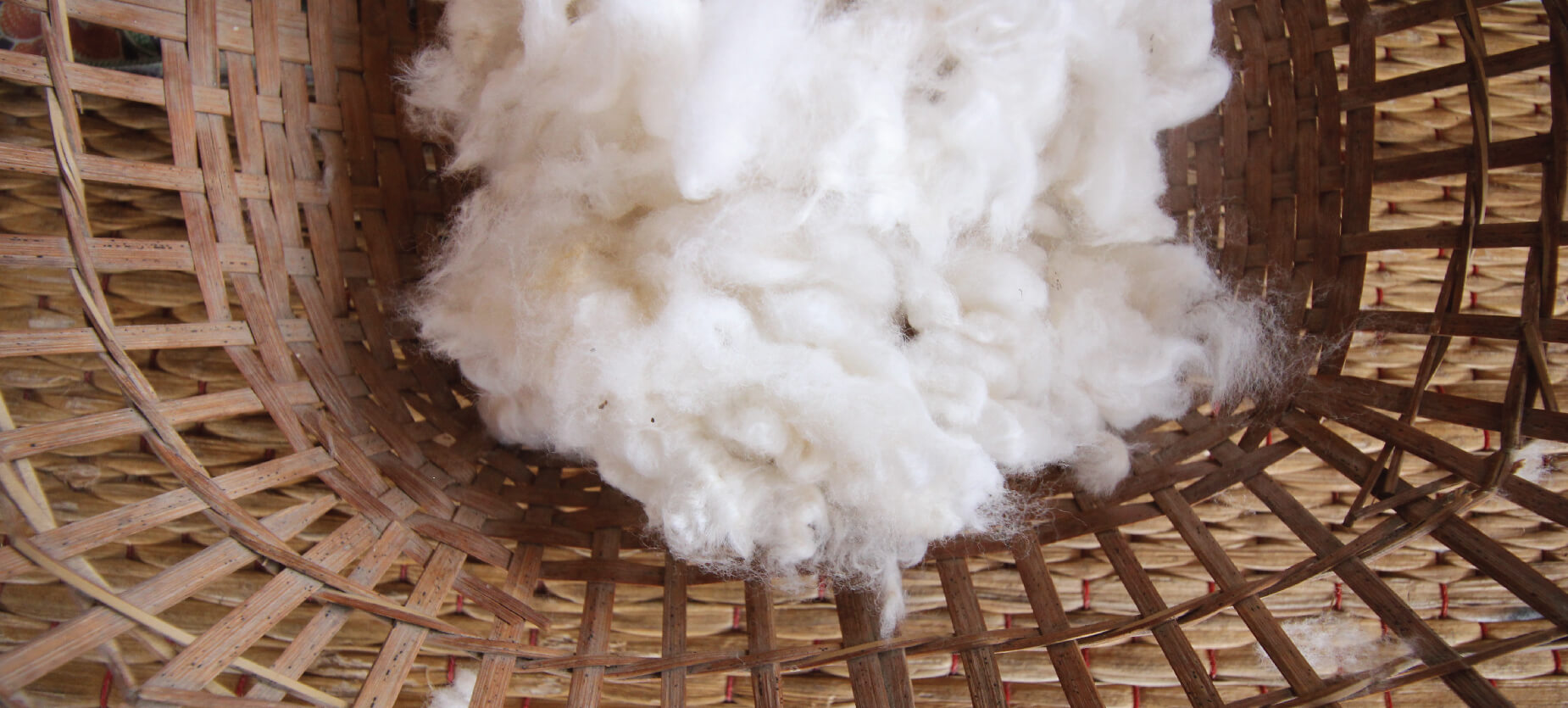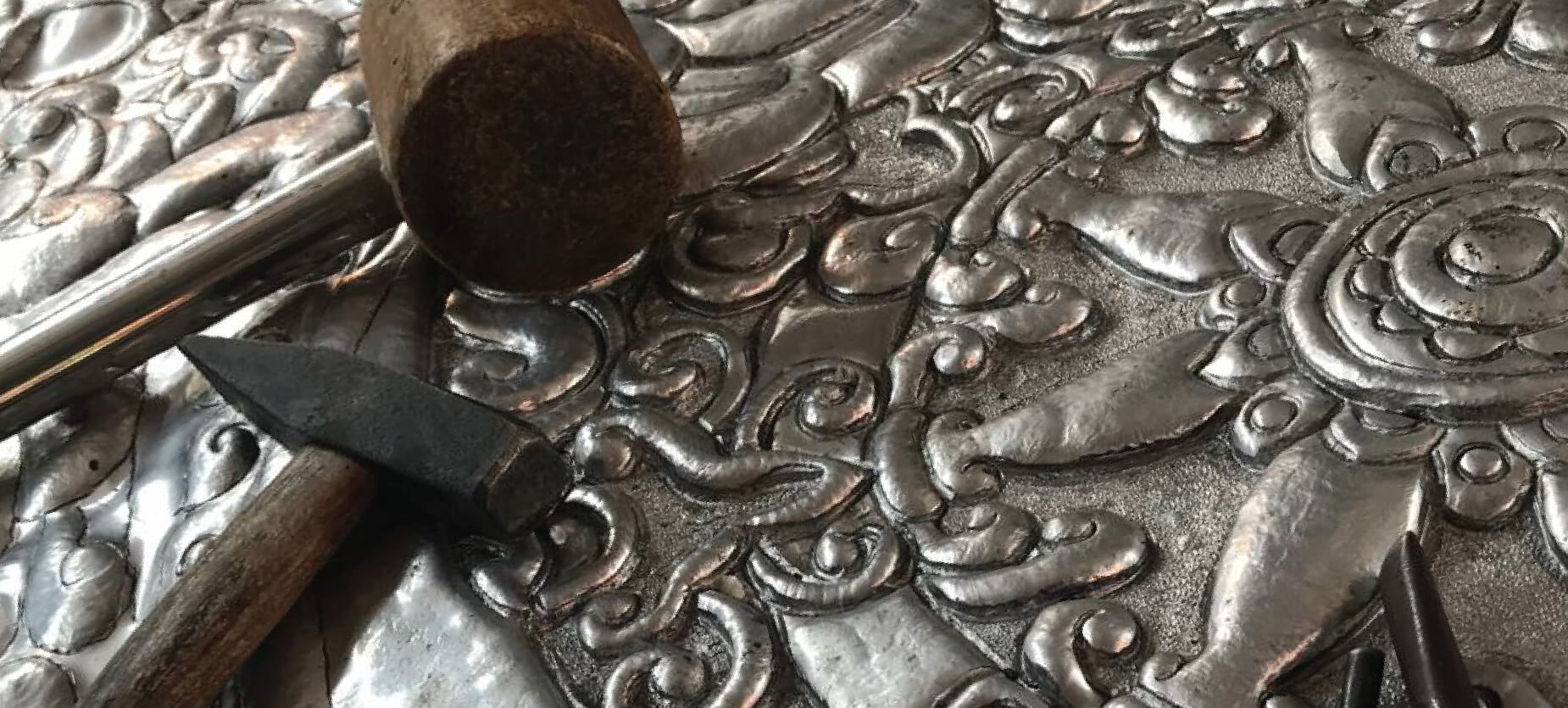We use cookies to personalize your experience. By continuing to visit this website you agree to our use of cookies. Learn more about privacy policy
TIME – EFFORT – SKILL – ARTISTRY
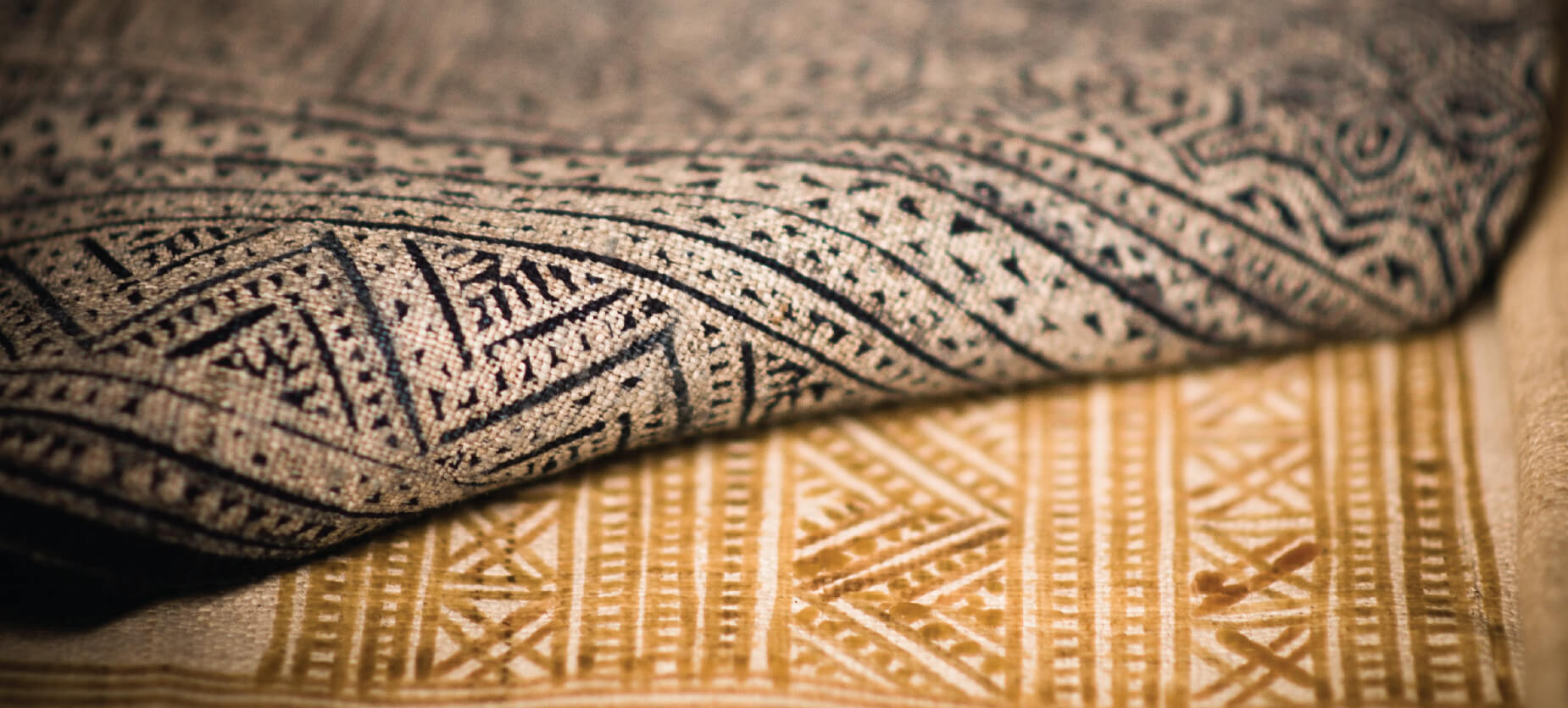
It is notable that, in Southeast Asia, the Hmong are the only ethnic group that practices the age-old “resist” technique of batik, whereby women dip liquid wax from fine copper tools onto cloth to prevent the indigo dye from penetrating the areas where they have delineated their wax designs. As the batik process requires extensive time, effort, skill, and artistry, every garment that a woman carefully fashions is cherished.
Hmong women are renowned for their consummate needlecraft, done by machine for piecing and border work, and by hand for the finest embroidery. Starting at an early age, girls train their skills over countless hours, sewing samplers based on age-old patterns, and using a variety of techniques they have learned by heart. In adolescence, young women take joy in fabricating all their own clothing—the more colorful and the bolder, the more alluring to attract a mate during courtship. As Hmong women move through adulthood, they embellish the clothing of every member of their family through the cycles of their lives, a practice that will continue as long as the eyes can see, and the fingers are nimble.
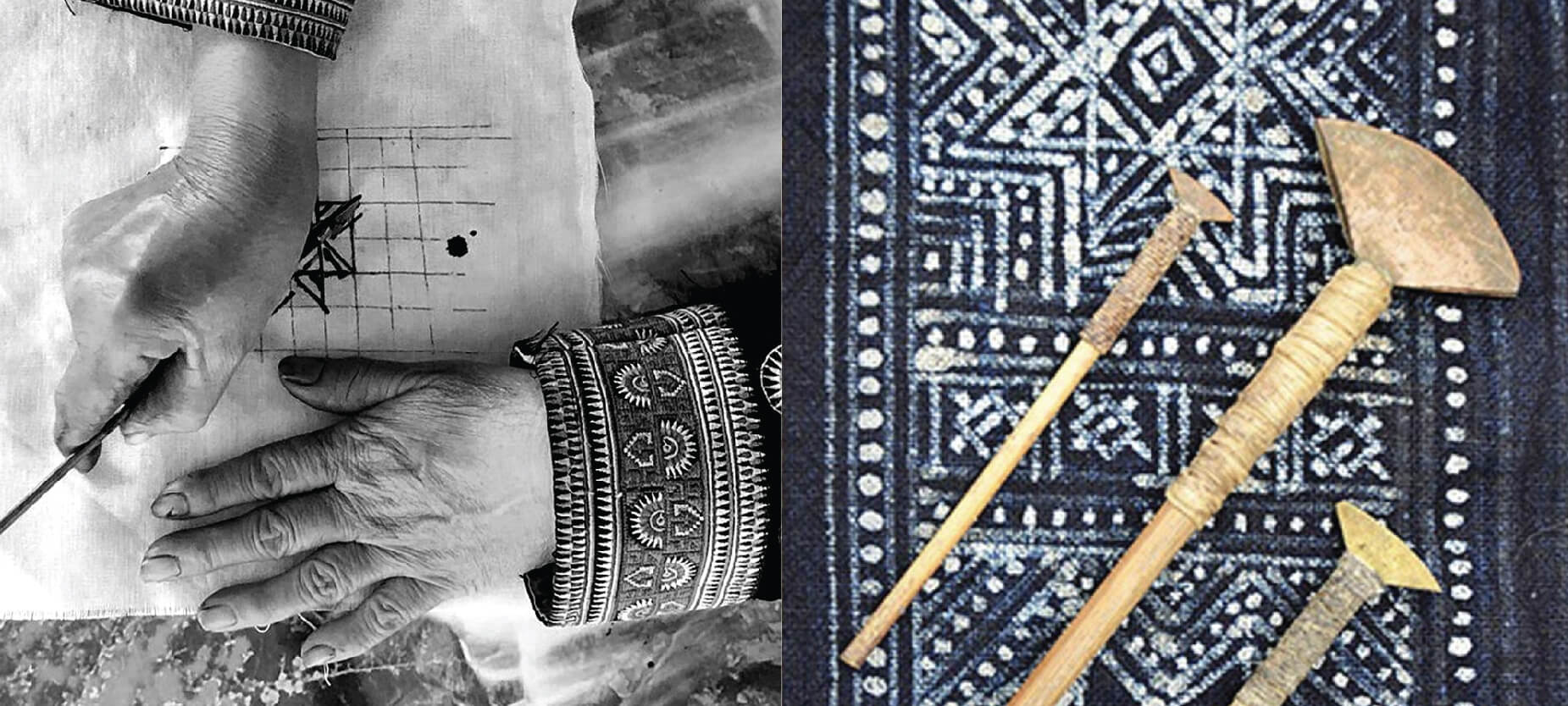
The patterns of the Hmong Batik are often inspired by nature and the personal experiences of the craftswomen. With the application of molten wax along the length of the hemp or cotton cloth, section by section, a grid of parallel lines filled in with geometric patterns—lines, dashes, dots, and swirls—and ancestral figurative motifs are created. The result is a fantastic cluster of diverse patterns and symbols, finely drawn in white or blue tones, all set in a spectacular, ordered matrix. The unique textiles signify the weavers’ integrity, each revealing a singular beauty and serving many purposes, identifying one group from another and, perhaps most importantly, adorning the wearer.
